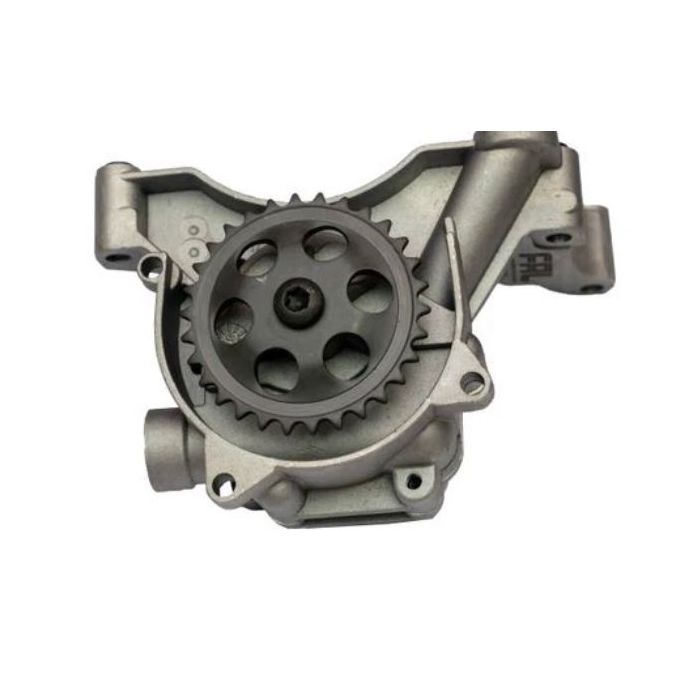Install a state-of-the-art clp engine for better performance.
Install a state-of-the-art clp engine for better performance.
Blog Article
Exactly How a Clp Engine Can Boost Performance in Various Industries
The arrival of CLP engines notes a considerable change in operational effectiveness across different fields, driven by their capability to enhance gas consumption and reduce downtime. Industries such as manufacturing and logistics stand to gain considerably from their durable layout and constant power result, which promise to simplify procedures and enhance productivity. As organizations significantly prioritize sustainability together with effectiveness, the role of CLP engines ends up being a lot more crucial. What continues to be to be seen is how these developments will certainly form the future landscape of commercial procedures and their effect on wider financial trends (clp engine).
Overview of CLP Engines
CLP engines, or Continuous Fluid Propellant engines, stand for a substantial improvement in propulsion innovation, particularly for area applications. These engines use a continual feed system that permits the sustained expulsion of propellant, leading to enhanced efficiency and performance contrasted to traditional solid or hybrid propulsion systems. By maintaining a constant flow of fluid propellant, CLP engines can achieve more precise drive control, which is important for navigating spacecraft in various mission circumstances.
The layout of CLP engines incorporates advanced materials and cutting-edge gas administration systems. clp engine. This results in decreased weight and increased integrity, vital factors for long-duration area objectives. Additionally, the continual procedure reduces the risk of burning instability, a typical challenge in standard rocket engines.

Advantages in Production
The production of Constant Liquid Propellant (CLP) engines provides several noteworthy benefits that boost both effectiveness and cost-effectiveness. Among the primary advantages is the structured manufacturing process, which lowers the complexity connected with standard propulsion systems. By using liquid propellant, manufacturers can accomplish better precision in engine efficiency, resulting in maximized energy outcome and decreased waste.
In addition, CLP engines help with a greater degree of modularity, permitting simpler integration right into various manufacturing lines. This flexibility can significantly decrease lead times and enhance overall functional versatility. Making use of CLP modern technology also has a tendency to lessen the need for considerable maintenance due to less moving parts, which translates into minimized downtime and functional costs.

Applications in Logistics
Leveraging Constant Fluid Propellant (CLP) engines in logistics offers significant benefits in functional effectiveness and dependability. These engines supply a durable solution for various transportation needs, allowing the seamless movement of products across vast ranges. The inherent style of CLP engines enables constant power output, which find out here equates right into smoother and a lot more foreseeable transport routines.
One of the vital applications of CLP engines in logistics remains in durable products transport, where they can drive both ground and airborne cars. Their capacity to maintain high performance under varying lots conditions guarantees that distribution timelines are fulfilled, thereby enhancing customer contentment. Furthermore, CLP engines can be incorporated right into automated logistics systems, assisting in real-time monitoring and maximizing path planning.
Moreover, the longevity of CLP engines lowers maintenance downtime, enabling logistics companies to optimize their operational capacities. This is specifically useful in warehousing procedures, where efficiency in dealing with and delivering products is crucial. As logistics continues to develop, the integration of CLP engines stands for a forward-thinking method that not just boosts performance but additionally supports the market's growing needs for dependability and speed.
Influence On Energy Efficiency
Just How do Continuous Fluid Propellant (CLP) engines boost energy efficiency in transport? CLP engines utilize a consistent circulation of liquid gas, maximizing combustion processes and keeping a stable drive output. This design decreases power losses connected with conventional combustion engines, where gas shipment can vary and cause inadequacies.
The continuous procedure of CLP engines enables a more effective thermal useful link cycle, leading to greater particular impulse compared to conventional engines. clp engine. This converts to decreased fuel consumption for the exact same quantity of work done, considerably lowering operational costs across various transportation markets, including air travel and maritime industries
Additionally, the capacity of CLP engines to keep optimum efficiency under varying tons conditions reduces the demand for constant acceleration and deceleration, better boosting fuel performance. Boosted power performance not just adds to cost financial savings but also results in lower greenhouse gas exhausts, lining up with global sustainability goals.
Future Trends and Innovations
Arising developments in Continual Fluid Propellant (CLP) engine innovation pledge to transform the landscape of transportation effectiveness and sustainability. As markets pivot toward greener alternatives, CLP engines stand at the center, incorporating cutting-edge materials and layout techniques that enhance efficiency while minimizing ecological impact.
Among one of the most encouraging fads is the fostering of hybrid systems that incorporate CLP engines with renewable resource resources. This synergy can maximize fuel intake and decrease exhausts, aligning with global sustainability goals. Improvements in computational liquid characteristics (CFD) are assisting in the layout of more aerodynamically effective engines, leading to minimized drag and enhanced fuel performance.
Additionally, the advancement of wise monitoring systems is set to enhance functional efficiencies. These systems utilize data analytics and IoT innovation to optimize engine performance in real-time, ensuring that the engines operate within their most efficient parameters.
As research study remains to discover alternative propellant solutions-- such as biofuels and synthetic gas-- the future of CLP engines looks appealing. By harnessing these developments, sectors can not just enhance their performance however likewise contribute considerably to a cleaner, a lot more sustainable future in transport.
Final Thought
Finally, CLP engines represent a substantial innovation in effectiveness throughout multiple markets. Their capacity to optimize fuel intake and lower functional prices, incorporated with a constant feed system, boosts power result and operational integrity. The combination of sophisticated my latest blog post products and less relocating parts reduces maintenance needs, while placement with sustainability goals placements CLP engines as a pivotal modern technology for the future. Proceeded technology in this area promises more renovations in performance and ecological efficiency.
Report this page